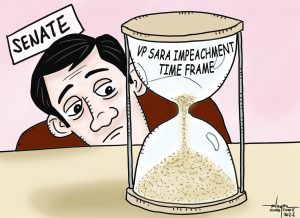By Jose Paulino Amadao Santos Munda Jr.
In trying to get a deeper understanding of what happened during the 5- month battle and its aftermath, I read 4 recently published books:
- THE CHALLENGES OF REPORTING VIOLENT EXTREMISM: LESSONS FROM MINDANAO (2021)
Mindanao Institute of Journalism
Carolyn O. Arguilas (Editor)
Contributing writers:
Amalia B. Cabusao, H. Marcos, C. Mordeno, et. al.
Arguillas is a veteran, well respected journalist and Cabusao is the Editor-in-chief of THE MINDANAO TIMES.
- THE BATTLE OF MARAWI (2020)
Criselda Yabes
Yabes wrote this book with the research grant from the Harry Frank Guggenheim Foundation. She has written nine other books.
- MARAWI SIEGE: STORIES FROM THE FRONTLINES (2020)
Carmela S. Fonbuena
Fonbuena is a Manila-based journalist who reports for THE GUARDIAN and RAPPLER. She is a BA Journalism grad of U.P. and is a co-author of 2 other books.
“The book “MARAWI SIEGE” dispels the fog of war not only through the soldiers’ lens but also those of the hostages, displaced civilians, local government officials, extremists…” — Marites Vitag (Chair Emeritus, Journalism for Nation Building Foundation
- NO MAN LEFT BEHIND
Phil Fortuno, Ph.D.
- A graduate of the Armed Forces Officer Cadet School
- A decorated ex-Scout Ranger officer
“… Written with first-hand knowledge and understanding… a gripping narrative of our soldiers difficulties — outnumbered and outgunned at the start…” — F. Sionil Jose (Philippine National Artist for Literature)
On May 23, 2017, 8 AFP troopers attempted to capture the Emir Isnilon Hapilon in an apartment in Marawi City. It turned out that the AFP’s intelligence report was faulty which led to an unsuccessful operation— a “botched” job — wherein the enemy surprised and killed 2 troopers, wounded 4 others and trapped the group.
This led to several other attempts during June to “RESCUE” the 8 — which resulted in more AFP deaths since they were unprepared, outgunned, and outmanned by the Islamists who were shooting them like sitting ducks from tall buildings.
This began the Battle of Marawi on 23 May which will last from 5 months until 23 October.
- TIMELINE OF THE BATTLE OF MARAWI
| May 23 | ISIS-inspired Maute Terrorist Group
Took over several government and private institutions |
| At 10 P.M., Rodrigo Roa Duterte on a state visit in Russia, declared Martial Law in Mindanao. | |
| President Duterte suspended the writ of habeas corpus, permitting arrests without warrant in Mindanao. | |
| 1st Scout Ranger Brigade, under Ltc Samuel Yunque, arrived from combat operations in the Bukidnon-Lanao del Sur boundary to rescue 20 personnel of 5th Mechanized Infantry Battalion (5MechBn) trapped in Brgy Wawalayan Marinaut, Marawi City. | |
| 14 personnel of 5MechB safely rescued by 1SRB troops. 7 civilians were also extricated by 1SRB troops. | |
| 1SRB safely rescued another 2 personnel of 5th Mechanized Battalion total: 16 military personnel. | |
| DND Secretary Delfin Lorenzana issued arrest order no.1 to capture over 100 suspected terrorists. | |
| June
|
A government airstrike accidentally killed 11 soldiers and wounded 7 more in Brgy Wawalayan Marinaut, “FRIENDLY FIRE” – near the location of the battle site. |
| Lorenzana issued deadline to end the battle was not met. | |
| President Duterte offered Php 10 million bounty for Abu Sayyaf leader Isnilon Hapilon and Php 5 million each for the Maute brothers, Abdullah and Omar. | |
| Cayamora Maute, father of Abdullah and Omar, was arrested by government security forces in Davao City. | |
| AFP forces recovered almost Php 80 million in cash and checks in a house occupied by Maute Terrorist Group. | |
June |
1SRB with 5MechBn troops, recovered the 2 immobilized APCs and also retrieved of the 4 KIA troops in Brgy Wawalayan Marinaut. |
| AFP arrested former Marawi City Mayor for rebellion. He denied the allegation. | |
| DND Lorenzana issued a second arrest order for 185 people with suspected links to terror and rebel groups. | |
| Farhana Romato Maute, mother of Abdullah and Omar, and several others were arrested in an enemy “safe house”. | |
| AFP seized 11 kilos of shabu worth Php 250 millioN, drug paraphernalia and high-powered firearms in a house — a strong-hold of the ISIS-inspired Maute group. | |
| July
|
President Duterte visited Marawi to boost the morale of the troops. The first of his 7 visits to Marawi City during the war. |
| Congress granted President Duterte’s request to extend Martial Law in Mindanao for 6 months which later was subsequently extended to December 31, 2018 to rehabilitate Marawi. | |
| The military took full control of Mapandi bridge, one of the enemy’s strategic gateway to the main battle area. | |
| August | AFP cleared Marawi’s Grand Mosque, an enemy used as a stronghold for their snipers. |
| September | AFP troops rescued Catholic priest Fr, Chito Suganob from captivity. |
| The military cleared Bato Ali Mosque, used by the enemy as one of their strongholds near Lanao Lake – planned as their escape route. | |
| Government troops regained control of Masiu Bridge, the 3rd of the enemy-controlled strategic bridges. | |
| October | DND Secretary Lorenzana officially confirmed Isnilon Hapilon and Omar Maute killed by AFP forces. |
| President Duterte officially declared the Liberation of Marawi City. | |
| October 23 | DND Secretary Lorenzana officially announced the end of all major combat operations in Marawi City thereby ending the 5-month long military offensive to liberate Marawi from ISIS-inspired Maute Terrorist group. |
First, let me lay out the backdrop of this epic, 5-month battle – the longest in our modern PH history:
- KEY PLAYERS
- Government:
President Rodrigo Duterte – President of the Republic of the Philippines. He was the first president from Mindanao and was barely a year in office when the Marawi crisis erupted.
Delfin Lorenzana – Secretary of the Department of National Defense. He was a former commander of the Philippine Army Special Operations Command and was the defense and armed forces attache in Washington D.C. from 2002 to 2004.
Majul Gandamra – Mayor of Marawi City. He was in his first term as mayor and was barely a year in office when the Marawi crisis happened. He was reelected in 2019.
- ARMED FORCES OF THE PHILIPPINES
General Eduardo Año – AFP chief of staff from December 2016 to October 2017. After his retirement, he was appointed undersecretary and later secretary of the Department of the Interior and Local government. He is a member of Philippine Military Academy Class of 2018.
General Carlito Galvez Jr. – Western Mindanao Command chief from January 2017 to April 2018, when he was appointed AFP chief of staff. He was appointed secretary of OPPAP after his retirement. He is a member of PMA Class of 1985.
Lieutenant General Cirilito Sobejana – He was commander of Joint Task Force Sulu during the Marawi siege. He was appointed WEST-MINCOM chief in June 2019 and Philippine Army chief in July 2020. He received the coveted Medal of the Valor for showing exceptional courage during battles in Basilan in 1995. He is a member of PMA Class of 1987.
Brigadier General Romeo Brawner Jr. – Deputy commander of the Joint Task Group Ranao. He served as spokesperson during the siege and became Kampo Ranao commander in December 2018.
- PRO-ISLAMIC STATE GROUP
Isnilon Hapilon – ASG sub-leader in Basilan. He pledged allegiance to the Islamic State in 2014 and was named emir of the international jihadist group in Southeast Asia.
Omar Maute – Leader of the Maute Group. He studied at Al-Azhar University in Egypt. He pledged allegiance to the Islamic State in 2015.
Abdullah Maute – Leader of the Maute Group. He finished Islamic Studies in Jordan. He was a former MILF combatant and fought in the 2000 “all-out-war”. He pledged to the Islamic State in 2015.
Owaidah Benito Marohombsar or “Abu Dar” – Leader of the Maute Group. He previously led the armed group Khilafa Islamiyah Mindanao (KIM) and was reportedly trained by Malaysian bomb maker “Marwan”. He pledged allegiance to the Islamic State in 2015.
Maddie Maute – Sibling of Omar and Abdullah. He appeared in a video where the siege leaders planned attacks while in Marawi.
CONCLUSION: QUESTIONS ANSWERED, OTHER QUESTIONS ASKED
To get a better understanding of the Battle of Marawi and its aftermath, I sought answers to the following questions:
- What was the military strategy?
- What were the casualties?
- What was the COST of this 5-month battle?
- What is the COST of the rehabilitation of this city?
- When will the reconstruction be finished?
FIRST: There was NO military strategy because thee AFP just stumbled into this battle – almost accidentally. It started as a “BOTCHED-UP” operation to capture the Emir Hapilon based on a faulty intelligence report. The 8 AFP troopers did know which floor or the number apartment where Hapilon was. They were shot at by Islamists killing 2 immediately, wounding 4 and trapping the group. Thus began a series of unsuccessful “RESCUE” attempts – thus, escalating the hostilities into a full-fledged battle.
Second: According to Fortuno’s narrative:
In Fortuno’s book (p. 353)
“The prolonged urban siege had taken the lives of 168 soldiers and 974 terrorists, 13 of them foreigners… 87 civilians who died, 40 due to illness, and hundred of thousands of residents were displaced…”
Perhaps, we’ll never know how many of the 974 were really “terrorists”. Some were hostages forced by the Islamists to shoot at the AFP forces – or else…
On the 3rd and 4th questions, there are NO answers found in the 4 books. Our government will have account for these cost estimates which will run into hundreds of billions. Was this a “PHYRRIC” victory?
On the 5th question: May 23, 2021 marked the 4th anniversary of the battle – and the Reconstruction is far from complete. Did our AFD have to destroy the WHOLE CITY of Marawi?
Let me end with this quote:
“The most important rehabilitation is that of our identity as Maranaws, where can our children get their Islamic and Arabic Education? The recovery and rehabilitation program needed by the Meranaws is not only INFRASTRUCTURE but the totality of our being, our IDENTITY.” — Dalumabi Lao Bula, professor, MSU




